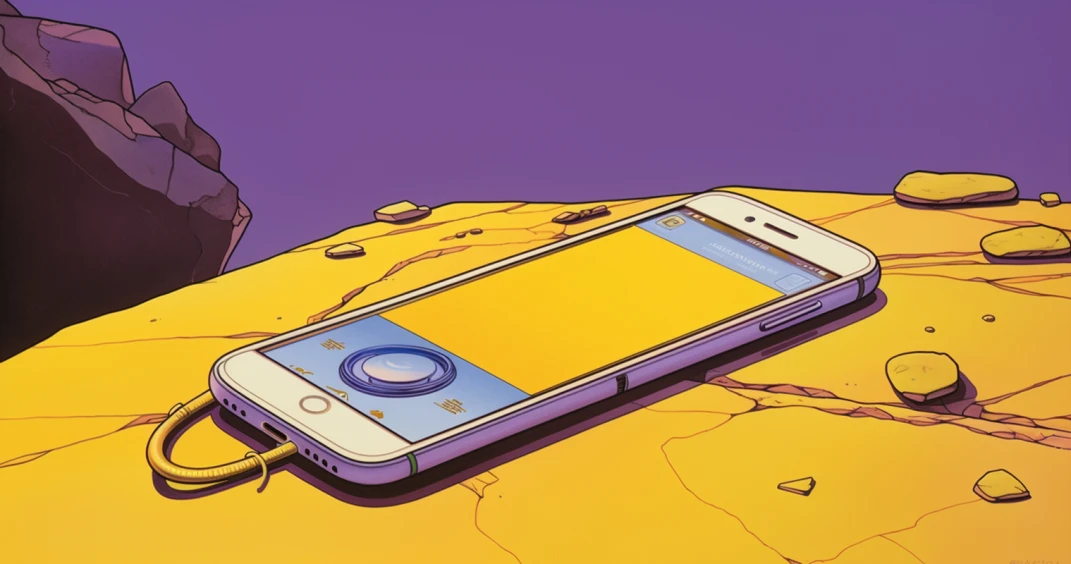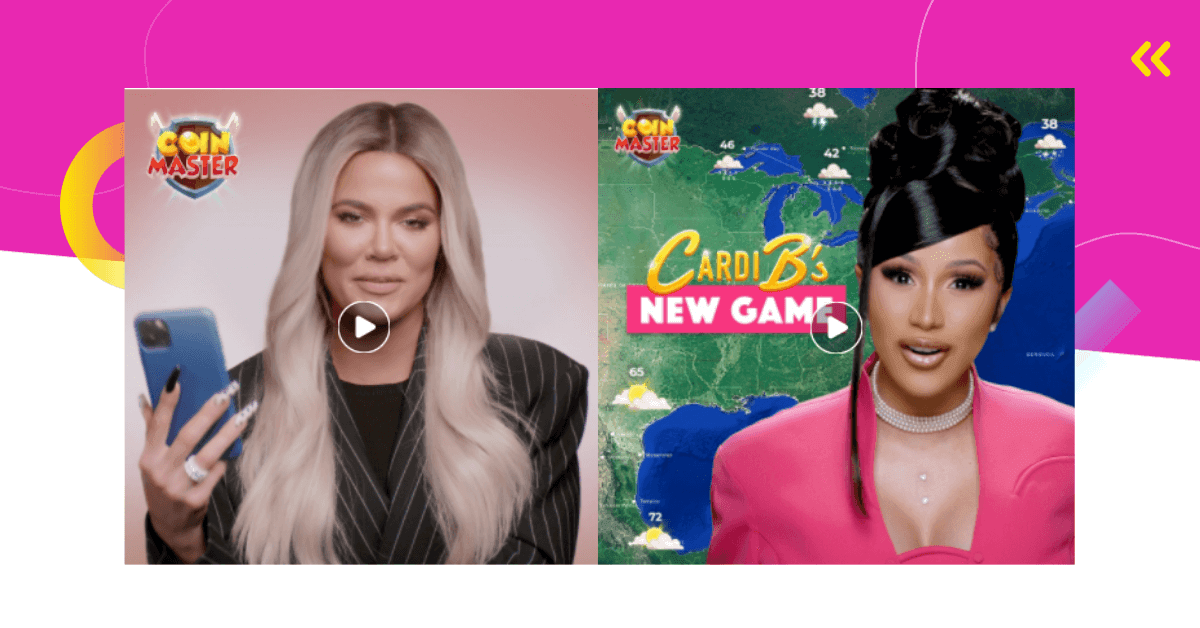Wondering how to create a bulletproof mobile game user acquisition strategy?
Look no further – this article is for you.
I explain the basics of both organic and paid mobile game user acquisition. Furthermore, I’ve included practical tips to help you get started on your journey towards more users.
Ready?
What Is Mobile Game User Acquisition?
Put simply, mobile game user acquisition is the process of getting users for a mobile game.
A mobile game needs players to be successful and profitable. If nobody is playing your game, all that hard work and money you put into making it will go to waste.
Thus, you need a reliable way of getting people to install your game.
This is where user acquisition comes in.
There are various strategies you can employ, as well as different types of user acquisition strategies like organic and paid.
But more on that later. Let’s first cover the main benefits of a mobile game user acquisition strategy..
Why You Need a Mobile Game User Acquisition Strategy?
This is a simple one.
Without a well-thought-out mobile game user acquisition strategy, you’ll struggle to get users.
The chances of people discovering your game on their own while it’s newly released and without any users are low.
You need to get the ball rolling with advertisements and UA campaigns.
After you get some traction, some people might just stumble upon your game, but that’s still not something you should rely on. The only way to get to thousands or millions of users is through continued user acquisition efforts.
As more and more people start playing your game, its popularity will rise. That will allow you to monetize these users, whether through ads, in-app purchases, or subscriptions.
That, of course, is the ultimate goal of every game developer or publisher.
Main Types of User Acquisition for Mobile Games
A mobile game user acquisition strategy consists of two main approaches – paid and organic user acquisition.
To get maximum results, I recommend you include both in your mobile game marketing strategy. By focusing on just one, you miss out on many opportunities to get more users.
Here’s a short explanation for each approach to get you started.

Paid Mobile Game User Acquisition
As the name implies, this approach includes converting users with paid mobile game ads on social media platforms and ad networks.
Primarily, these are app install ads that encourage people to install your game.
This is one of the most effective tactics for user acquisition for mobile games because it’s data-driven and allows you to reach high-quality users.
Furthermore, by running ads on popular ad networks, you can get your game in front of a huge audience.
According to Adjust, mobile gaming accounts for 50% of user acquisition ad spending. This tells us that mobile games have solidified their place on the mobile market. They monetize better than all other categories, which is why so much money is being invested into user acquisition campaigns.
Because paid user acquisition is all about converting users through ads, ad creatives are at the forefront. Furthermore, campaign management is moving more and more towards automation, which leaves ad creatives as the main thing that’s still best done by humans. This is why you need to put a big portion of your time and effort into creative production.

Organic Mobile Game User Acquisition
Organic user acquisition refers to the process of driving installs without using paid ads. More specifically, it’s about improving the discoverability of your game.
Most commonly, that’s achieved through app store optimization. However, organic user acquisition can also include posting on your social media channels to improve brand awareness and grow a community. In other words, content marketing.
The best thing about this approach is that it’s – free!
However, you won’t get immediate results like with paid user acquisition. But it’s still worth it to put effort into organic UA in combination with paid UA – it will pay off in the long run.
Tips for Creating a Killer Mobile Game User Acquisition Strategy
Now that you understand the user acquisition basics, it’s time to go deep into specific tips and tactics for getting more users for your mobile game.
In this section, I’ll explain everything you need to know about driving conversions with both paid and organic user acquisition strategies.

1. Combine Paid and Organic User Acquisition
As I’ve mentioned before, you’ll get the best results by combining both paid and organic mobile game user acquisition.
Most companies use paid user acquisition campaigns to kick things off – it’s a great way to get started. Once the brand or game becomes well-known, they focus more on organic user acquisition.
Why?
Getting a decent number of downloads from the start makes you more relevant in the app stores. More specifically, it helps you rank higher in the search results and makes it easier for people to find your game. Thus, paid user acquisition can boost your organic efforts. According to AppRadar, you can get up to 1.5 organic installs per every paid install.
Also, don’t forget that people who click on your install ads land on Google Play or App Store. This is another reason your app store listing should be presentable even when you’re paying for user acquisition ad campaigns.
You can see that paid and organic user acquisition go hand in hand, even aid each other. Therefore, when coming up with a mobile game user acquisition strategy, use both to your advantage. The more tactics and channels you utilize, the more people you’ll reach.

2. Identify Target Audience for Your Game
As with any marketing effort, understanding who are the intended users for your game is essential.
However, you can’t simply target “gamers”.
Here’s why.
In the past, gaming was considered the favorite pastime activity for a primarily younger male audience. Nowadays, we know that gamers come in different shapes and sizes. In fact, the majority of mobile gamers (55%) are women. (Statista)
The average age of a mobile gamer is 34, and many mobile games have an older, 50+ audience.
This means there’s a large and diverse audience at your disposal. According to Statista, there are more than 2.2 billion gamers worldwide. It is your job to figure out which specific groups would enjoy your game and how to appeal to them. In other words, you need to narrow down your target audience.
To get started, you can analyze your competitors’ audience. This will give you a good idea of who plays games similar to yours. For example, if you have an interactive story game, you’ll find out that the userbase of most games in this genre is female.
Go on and define the basics – gender, location, age range, language, devices, etc.
Then, dive even deeper and think about the interests and behavior of your target audience. The thing that can help with target audiences for mobile games are player motivations.

Consider Player Motivations
Player motivations refer to the reason(s) why people enjoy playing mobile games. For example, some people just want to relax, while others play games to connect with other people.
Make sure you consider this when defining your target audience because it will allow you to reach high-quality users.
Facebook Gaming identified eight common player motivations:
- Self-expression
- Social connection
- Progression
- Expertise
- Discovery
- Power
- Escapism
- Relaxation
Player motivations also help you craft better ad creatives. You can read all about it in my guide on motivation-based creatives.
3. Set Your KPIs
Determining your Key Performance Indicators is another crucial step because they help you measure the performance of your user acquisition campaigns. In other words, KPIs will show you how successful your campaigns are.
Track the number of installs, as your goal is to get more users. But that’s just the tip of the iceberg. Metrics like Cost Per Install (CPI), Cost per Acquisition (CPA), and Customer Acquisition Cost (CAC) are also very important when it comes to user acquisition campaigns.
You should also track in-app-related metrics that are measured after the user installs your game. For example, metrics like user retention, session number and length, lifetime value (LTV), as well as various monetization KPIs like ARPPU, ARPDAU, and conversion rate.
These will tell you a lot about the quality of users you’ve acquired. The main goal is not to just acquire as many users as possible. Instead, you should aim to acquire high-quality users who will regularly play your game, and spend on in-app purchases or engage with ads.
Also, you should know what your return on investment (ROI) is.

4. Choose the Right Channels
For both organic and paid user acquisition, the channels you choose will play a big role in the success of your UA strategy.
Selecting the right social media and ad networks is crucial for paid user acquisition campaigns.
But how do you choose?
Look for networks that have the same userbase as your target audience. For example, if you are targeting a Gen Z audience, TikTok is a great choice. Facebook, on the other hand, is not the best option, as younger generations don’t use this platform.
Furthermore, it’s also essential to consider your KPIs. For example, the top three ad networks for acquiring loyal users with good retention are Google, Unity Ads, and Facebook. (AppsFlyer Performance Index)
On the other hand, if you have a mid-core game and want to acquire users who will engage with ads, Unity Ads, Google and AppLovin should be your top choices. (AppsFlyer Performance Index)
For more information, check out our article on the best ad networks to acquire players.
When it comes to organic user acquisition, your focus should be primarily on Google Play and Apple’s App Store. However, you can also consider other app stores like Huawei AppGallery.
Furthermore, you should also choose social media networks for content marketing. Once again, your target audience is a factor here. Also, consider the types of content you’ll post, as each social media platform has a different style and allows different formats.

5. Get the Hang of App Store Optimization
Here’s the thing – ASO is the king of organic user acquisition.
If you optimize your game’s app store listing, it can rank higher on Google Play and Apple’s App Store.
Thus, you need to know what you’re doing to drive conversions organically, and aid paid user acquisition.
Here are some useful tips.
In terms of keywords, ASO is similar to SEO. You should use relevant keywords in the game title and description because keywords are one of the ranking factors. (On Apple’s App Store, there’s a separate keyword field).
When coming up with a name, make sure it clearly signifies the main idea behind your game. This can also help you rank higher.
Don’t forget about visuals, as they’re often the deciding factor for many users.
In terms of visual content, make sure your icon is impactful and follows the current trends.
You should add screenshots and a promo video. Both should showcase the main game features. However, the promo video should also give users a taste of what it’s like to play the game, i.e., the game experience. And don’t forget to include a call to action, as it encourages people to download your game.
Lastly, ratings and reviews are also a factor in how well your game ranks on the app stores. So make sure you provide users with the best experience possible. In the case of negative reviews, make it a point to always answer every comment and take into consideration what users are telling you.

6. Master App Install Campaigns
Most social media and ad networks have their version of app install ads. These ads are made specifically to help you promote your game and make it easy for people to install it.
You need to become well-versed in these types of campaigns to get the most bang for your buck.
Since Facebook is among the top ad networks for advertising games, here are some basic guidelines for creating app install ads on this platform.
In order to promote your mobile game on Facebook, you need to create an ad with the App Promotion objective.
From there, you can choose App Ads, which are standard app ads. Or you can go for the Automated App Ads option – I’ll explain these later on.
You then need to choose your budget, audience, and placements. In the Optimization section, you can select the goal for your campaign.
Since the main goal is to get more installs, you should choose “App Installs” – which will optimize your ads for people who are most likely to download your game.
Finally, you need to add your ad creatives, along with the headline and description.
To troubleshoot your Facebook campaigns, check out our article on common reasons why your Facebook ads aren’t delivering. Or look for common Facebook ad mistakes.
Embrace Automation
My final advice when it comes to app install campaigns on Facebook is to move towards automating your user acquisition campaigns because this is the way of the future.
Facebook has the Automated App Ads (AAA) option I’ve mentioned before. AAA simplifies the ad creation process, making it a great option if you’re not a media buying expert.
Powered by machine learning, automated campaigns don’t require as much input as standard app install campaigns. Furthermore, they allow you to dynamically test multiple creative combinations. That makes it easier to reach more users and scale your campaigns quickly.

7. Focus on Creative Production
It’s important to understand the following – you can be a master in setting up and optimizing your ad campaigns, but if your ad creatives suck, you won’t get that far.
That’s the harsh truth of user acquisition.
Hence, you need to put extra time and effort into creative production.
If you do this right, people will flock to your game.

Ad Creative Tips for Mobile Games
Out of all available ad formats, video ads have proven to be the best choice for advertising mobile games. Unlike image ads, for example, video ads allow you to showcase the full game experience.
This is what a good mobile game video ad consists of: a catchy intro, riveting gameplay footage, emphasized game features, and a call to action.
This is also where you should utilize player motivations.
For example, let’s say you identified that one of your target groups is players who are driven by self-expression. To reach these specific groups of players, you should create video ads that emphasize the customization features of your game.
Simple, right?
When it comes to other ad formats, you can experiment with playable ads.
This is another good ad format for mobile games because players can try the game out and get hooked quickly. However, the main downside of this format is its limited possibilities in terms of gameplay.
In other words, playable ads work great for casual games with simple mechanics. If you have a more complex game, you will need to simplify the gameplay in your ad significantly. And that might not be an ideal way to showcase your game.

8. Utilize Creative Trends
An essential part of creative production is coming up with enthralling ad concepts that will convince people to download your game right away.
That is, of course, easier said than done.
According to Forbes, digital marketers estimate that most people are exposed to mind-boggling 4000 to 10,000 ads per day!
Making your ad stand out is harder than ever before.
But don’t despair – there are some sure-fire creative concepts you can try out.
Spy on Your Competitors
Start by looking at what big game studios and publishers are doing to get an idea of what works and what doesn’t.
This type of research will help you identify current creative trends.
For example, if you analyze ad creatives from popular games, you’ll find that many of them are so-called fail ads. These ads make it seem that a game is more challenging than it actually is, making the viewers feel smarter.
Furthermore, many game studios employ story-based ads, especially for casual and puzzle games. The primary target audience for this type of ad is women.
There are many such trends in mobile game advertising. And they’re trending for a reason – these types of ads work.
The easiest way to start your research is by using Facebook’s Ad Library or if you have the budget for it, mobile intelligence platforms like SensorTower.
However, put your own unique spin on it to avoid merely copying your competitors.

9. Work With Gaming Influencers
A well-thought-out influencer campaign is a perfect addition to a mobile game user acquisition strategy.
Working with gaming influencers has plenty of benefits. It allows you to extend reach to a new audience, acquire high-quality users, and possibly even go viral.
It’s no wonder the influencer marketing industry has reached $16.4 billion in 2022, according to Influencer Marketing Hub.
Don’t have millions to throw on influencers?
Don’t worry.
Luckily, micro-influencers had the majority market share. That tells you that spending millions of dollars on celebrities is not always the recipe for success – you might get better results with smaller influencers.
The main reason for that is that micro-influencers tend to get more engagement on their content, even though they have a smaller following. Furthermore, because these influencers are not huge celebrities, their followers feel a deeper connection to them – they’re more like friends.
Tips for Influencer Marketing
Here are some quick tips that will help you run a successful influencer marketing campaign.
- Start by defining your goals, e.g., acquiring x number of users.
- Define your target audience and look for influencers with a shared target audience.
- Make sure the influencer you choose has authority in the mobile gaming niche and good engagement.
- Define your influencer marketing budget.
- Let the influencer do its thing – don’t be overly controlling when it comes to content.
- Analyze the results of your influencer marketing campaign.

10. Analyze How Effective Is Your Mobile Game User Acquisition Strategy
My final advice is to constantly and consistently analyze the effectiveness of your UA campaigns.
Monitor your KPIs – this will help you determine whether you’re on the right track.
If your campaigns are working – great. Do more of the same, but keep optimizing them because user acquisition is a never-ending process.
If you’re not getting the results you hoped for, get back to the drawing board. First, you need to figure out why your campaigns aren’t working and do more testing. That will eliminate guesswork, and you’ll have a clear idea of what works and what doesn’t.
Also, user acquisition can be a slow and painstaking process, but don’t give up – it pays off in the long run.
Wrapping up Mobile Game User Acquisition
Does all of this seem like too much to handle?
If that’s the case, you should think about hiring a user acquisition agency to help you. This can save you a lot of precious time and money.
An experienced mobile game marketing agency like Udonis will know how to tackle all UA challenges and help you meet your goals. So feel free to contact us if you want to get your mobile game user acquisition strategy to a new level.







Comments